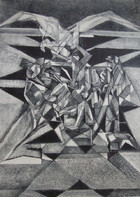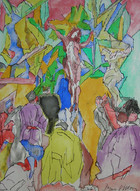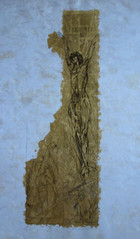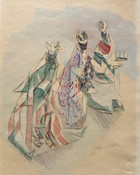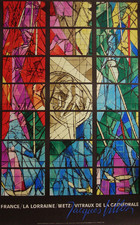Jacques Villon
(1875-1963)
If anyone knew anything about sibling rivalry, it was certainly Jacques Villon. He was born Gaston Emile Duchamp, the oldest of six children. Three others would also achieve fame in the arts: Suzanne Duchamp-Crotti, as a painter, Raymond Duchamp-Villon, as a sculptor, and Marcel Duchamp, as painter, sculptor and gad-fly Modernist, whose “ready-made” art objects (mass-produced urinals and coat racks!) scandalized the art world.
Small wonder, Gaston assumed the name of Jacques Villon to set himself apart from the crowd. Even though Villon had innovative works of his own in the ground-breaking 1913 Armory Show in New York, it was still kid brother Marcel, who stole all the headlines with his infamous Nude Descending a Stair Case.
Villon was a modest man, content to live in the shadow of Superstar Marcel. He spent ten years producing aquatint copies of works by notable Impressionist and early Modernist artists, making the images available in color for the first time to a mass audience. A consummate print-maker, Villon began his career with studies of Belle Epoque Paris much in the style of Degas and Toulouse-Lautrec but quickly embraced modernist trends, creating what art historians consider to be “the graphic language of Cubism” in his skillful use of traditional printing techniques to create truncated, geometric forms and luminous color planes.
The first rigorously Cubist piece sold to me as a Crucifixion scene, might well depict the Deposition, but the hovering bird of prey also suggests the legend of Prometheus. In Christ on the Cross, bold, contrasting shards of color add dramatic energy to the scene at Golgotha, while the shimmering field of gold in Gilded Christ with its soaring, sketched-in figure, captures a moment of transcendence, set against the vast white space of eternity.
Villon was an accomplished book illustrator and created a series of six color etchings of the Three Kings for a volume of poetry by French Writer Andre Frenaud, one of which can be found in my collection. His greatest sacred art creations are, undoubtedly, the stained glass windows he designed for the Blessed Sacrament Chapel of the Saint-Etienne Cathedral in Metz, depicted in a 1957 Villon lithograph, printed for the French government tourist office.
